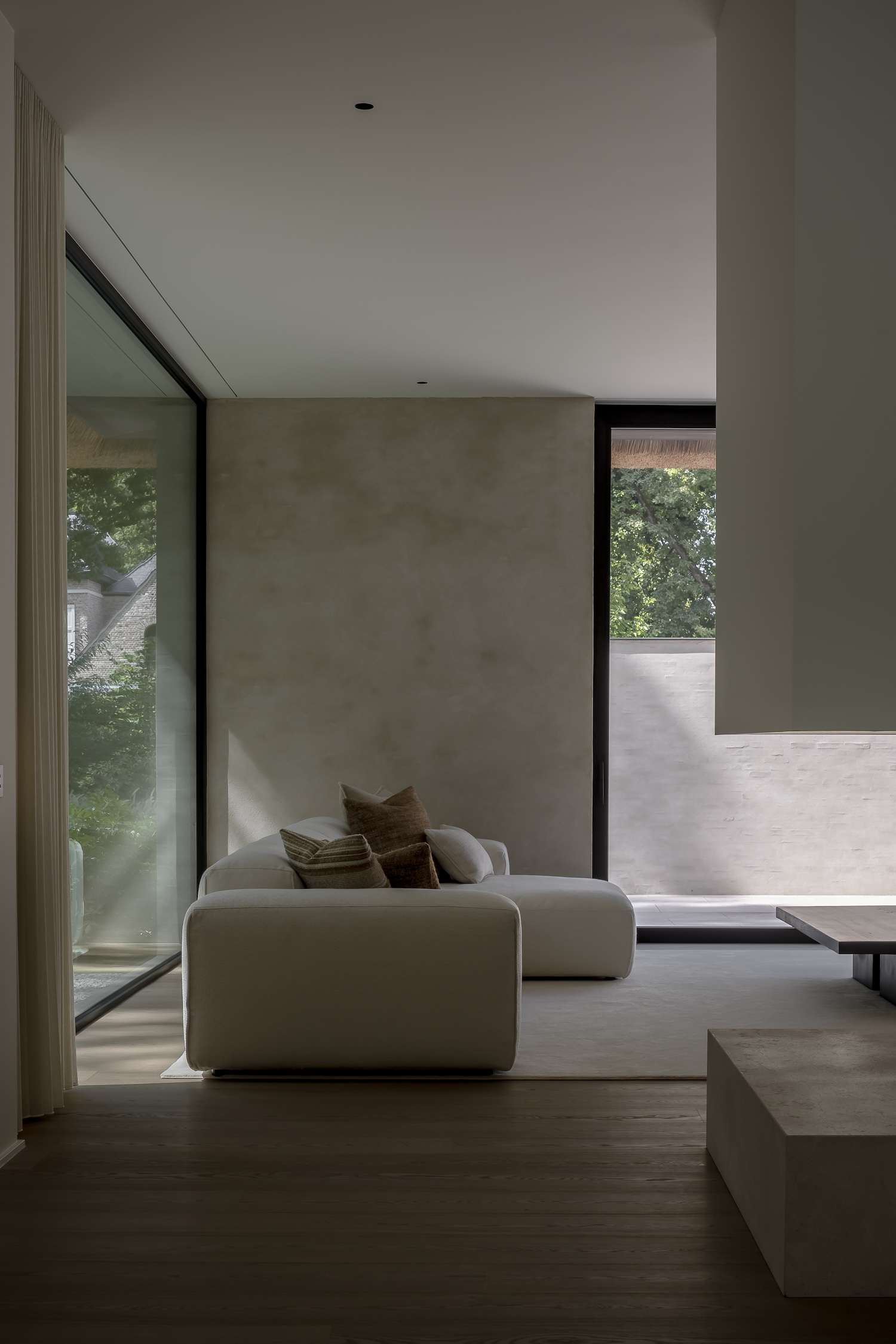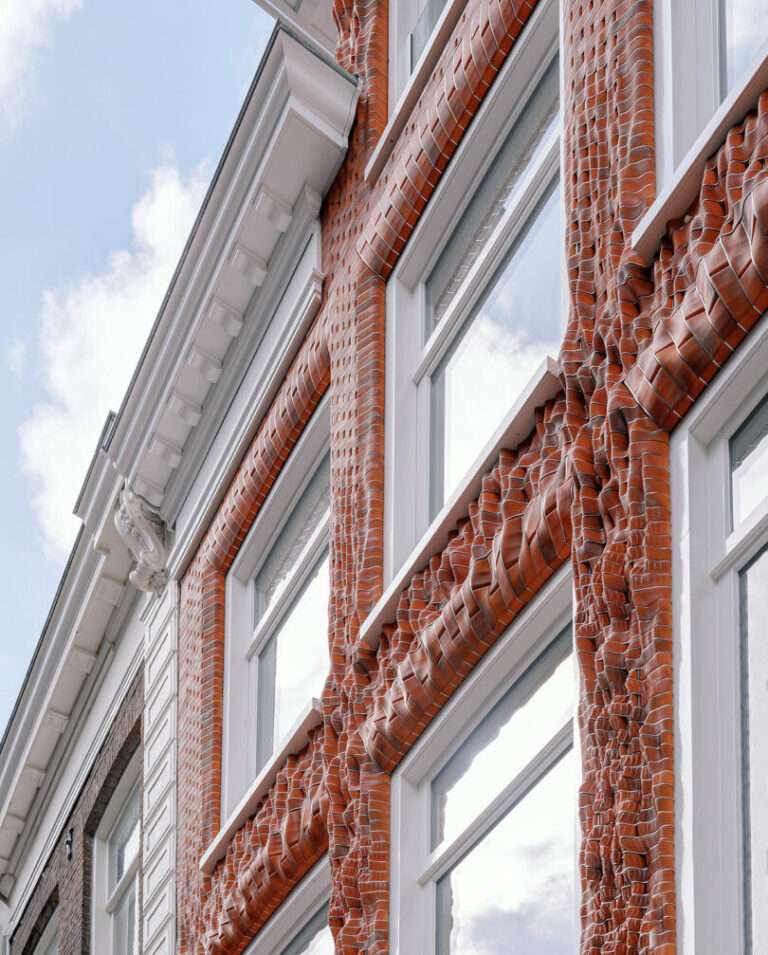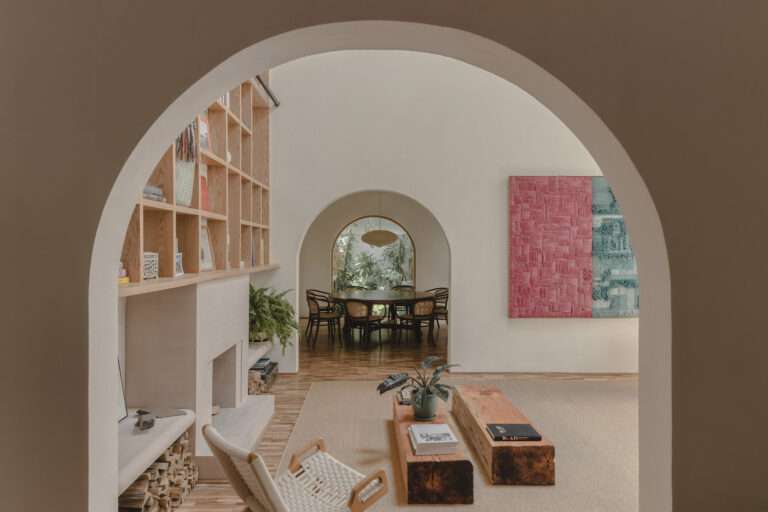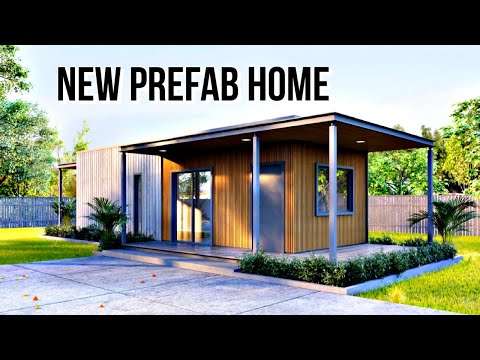
KS Residence is a minimalist residence located in Schilde, Belgium, designed by Frederik Dierckxsens Architects. This forest-edge house demonstrates how building and landscape can become intrinsically connected through carefully orchestrated volumes creating spatial rhythm blurring interior-exterior boundaries. The architectural approach driven by stillness rather than expression seeks dissolving boundaries allowing house engaging directly with environment in both form and atmosphere through proportion, material, nuance, and light.
The open-plan layout anchors through room sequence, each extending into distinct outdoor space with exterior areas varying in orientation, scale, and atmosphere not peripheral but spatially defined and reinforced by architecture. Long wall along street side frames generous front terrace while preserving privacy demonstrating how boundary conditions can establish outdoor rooms rather than simple leftover spaces. Toward rear, double-height volume extends outward subtly structuring ground floor by separating kitchen and dining spaces while carving two contrasting terraces.
Upper level employs same volume articulating private bedroom terraces and directing view toward forest, shielding home from neighboring plots. This vertical spatial continuity demonstrates how single architectural gesture can organize multiple levels establishing coherent spatial logic across floors while addressing varied functional requirements and view orientations. The double-height element serves simultaneously as interior spatial organizer and exterior landscape framework.
Spatial layering receives reinforcement through material continuity where natural, warm, tactile materials flow seamlessly from interior to exterior evoking dialogue with surrounding landscape. This inside-outside material consistency prevents typical residential threshold conditions where abrupt surface changes mark building edges, instead creating gradual transitions suggesting continuity between domestic occupation and natural setting. The connection to landscape extends beyond physical with light, views, and changing seasons constantly present making forest essential part of daily life within home.
The architectural approach seeking boundary dissolution allows house engaging environment directly demonstrates phenomenological design priorities where spatial experience takes precedence over formal expression. This emphasis on stillness reflects broader contemporary movements away from architectural statements toward buildings serving as backdrops for life rather than demanding attention through dramatic gestures or unusual forms.





